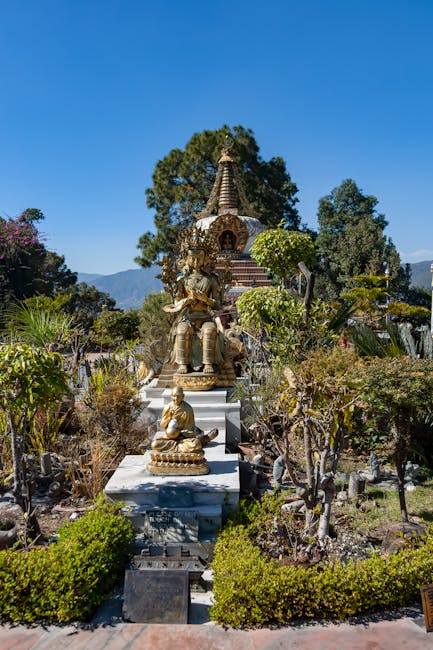Different Types of Buddha Statues and Their Meanings
Buddha statues are more than just art objects; they hold deep symbolic meanings and spiritual significance. These statues can be found in various poses, each representing different aspects of Buddha’s teachings and life. In this comprehensive guide, we will explore the different types of Buddha statues and their meanings, helping you understand the rich cultural and spiritual context behind each statue.
The History and Significance of Buddha Statues
Buddha statues have been an integral part of Buddhist culture for centuries. Originating in India, the tradition of creating Buddha statues has spread across Asia and the world. These statues serve as reminders of Buddha’s teachings and are often used as focal points for meditation and worship.
Main Types of Buddha Statues
There are several types of Buddha statues, each depicting different aspects of Buddha’s life and teachings. Here are some of the most common types:
1. Meditating Buddha
The Meditating Buddha, also known as the Dhyana Mudra, is one of the most iconic representations of Buddha. This statue depicts Buddha in a seated position with both hands resting on the lap, palms facing upward, and legs crossed in a lotus or half-lotus pose. This pose symbolizes concentration and meditation.
Meaning: The Meditating Buddha represents inner peace, focus, and enlightenment. It is often used as a tool for meditation and contemplation.
2. Earth-Touching Buddha
The Earth-Touching Buddha, or Bhumisparsha Mudra, is another popular statue. In this pose, Buddha is seated with one hand touching the ground and the other resting on his lap. This gesture symbolizes the moment of Buddha’s enlightenment under the Bodhi tree.
Meaning: This statue represents the unshakable nature of Buddha’s enlightenment and his connection to the earth. It signifies determination and the overcoming of obstacles.
3. Reclining Buddha
The Reclining Buddha, also known as the Parinirvana Buddha, depicts Buddha lying on his right side with his head resting on a pillow or his hand. This pose represents the final moments of Buddha’s earthly life before entering Nirvana.
Meaning: The Reclining Buddha symbolizes the transition from the physical world to Nirvana. It represents serenity, detachment, and the realization of the ultimate truth.
4. Teaching Buddha
The Teaching Buddha, or Dharmachakra Mudra, shows Buddha seated with both hands in front of his chest, forming a circle with the thumb and index finger. This gesture represents the turning of the wheel of Dharma, or Buddha’s teachings.
Meaning: The Teaching Buddha represents wisdom, understanding, and the dissemination of knowledge. It is often used as a symbol of learning and enlightenment.
5. Laughing Buddha
The Laughing Buddha, also known as Hotei or Budai, is a more contemporary and widely recognized statue. This statue depicts a chubby, joyful monk with a big smile and a large belly. It is often seen carrying a sack of treasures or a bowl.
Meaning: The Laughing Buddha symbolizes happiness, abundance, and good fortune. It is often placed in homes and businesses to attract prosperity and joy.
Choosing the Right Buddha Statue for Your Space
When selecting a Buddha statue for your home, office, or meditation space, consider the following tips:
1. Purpose: Determine the purpose of the statue. Are you looking for a statue to aid in meditation, attract good fortune, or simply as a decorative piece?
2. Size and Material: Buddha statues come in various sizes and materials, including bronze, wood, stone, and ceramic. Choose a statue that fits the space and aesthetic of your environment.
3. Placement: The placement of the Buddha statue is crucial. In general, it should be placed at eye level or higher, in a clean and respectful area. Avoid placing it on the floor or in a cluttered space.
4. Personal Connection: Choose a statue that resonates with you personally. The statue should evoke a sense of peace, inspiration, and connection to Buddha’s teachings.
Conclusion
Understanding the different types of Buddha statues and their meanings can enhance your appreciation of these beautiful and meaningful art pieces. Whether you are a practitioner of Buddhism or simply an admirer of its rich cultural heritage, Buddha statues can serve as powerful symbols of peace, enlightenment, and spiritual growth. When choosing a Buddha statue, consider its symbolism, purpose, and the personal connection it evokes. By doing so, you can create a space that reflects your values and aspirations, fostering a sense of tranquility and inspiration.

